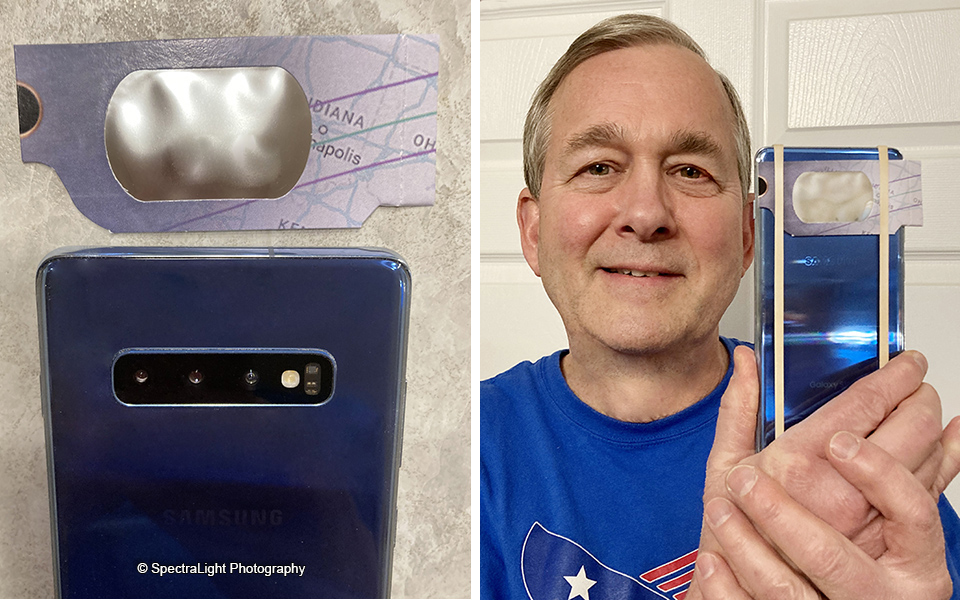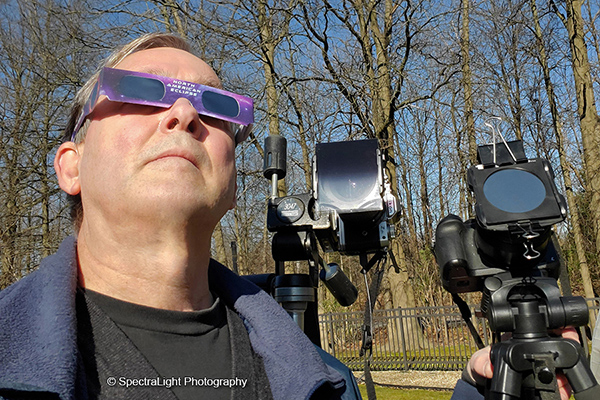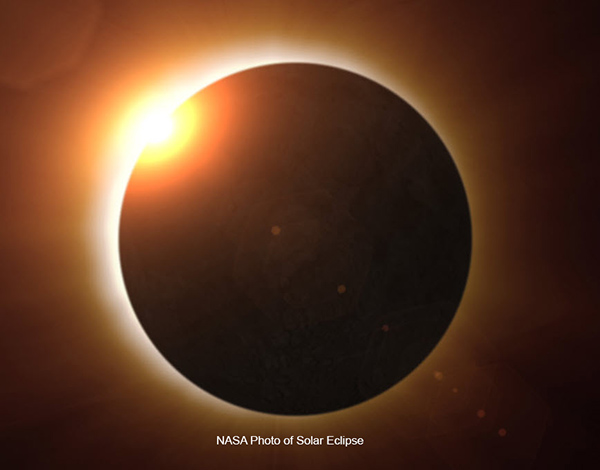As excitement builds for the solar eclipse on April 8th, I’ve compiled some tips for getting the best possible photos with a smartphone.
[UPDATE: Order Our 2024 Solar Eclipse Montage and Support 3 Cleveland Area Non-Profits!]
Safety First:
Never look directly at the sun with your naked eyes during the eclipse as it can cause permanent eye damage. Wear eclipse glasses with an ISO safety rating of 12312-2-2015. This rating should be found on the cardboard frame of the glasses.
Unfortunately, there are some unscrupulous companies that advertise an ISO rating of 12312-2-2015, even though they aren’t using the correct filters to protect your eyes. You should not search for eclipse glasses on the internet or Amazon and buy whatever pops up in the ads or search results. Order from one of the sources listed on this page provided by the American Astronomical Society: https://eclipse.aas.org/eye-safety/viewers-filters
Choosing a Solar Filter for Your Smartphone:
If you’re planning to get closeup photos of the sun with your smartphone, you must protect your camera’s sensor with a solar filter. However, there is some confusion about the type of filter to use with smartphones.
My research found that you should only use a dedicated solar filter designed for smartphone photography. These filters fit securely to your phone’s camera lens and allow for safe solar imaging. I then searched for “smartphone solar filters” and found that many have an ISO rating of 12312-2-2015. That is the same ISO rating that solar eclipse glasses should have so will eclipse glasses work?…
Using Solar Eclipse Glasses on Your Smartphone:
From NASA’s website: “The best thing to do is to cover the camera lens with a solar filter during the moments before (and after) totality when the sunlight is still blinding. This will eliminate sun blooming and give you a clear image of the solar disk. You can use one of those ISO-Certified sun-viewing glasses that will be available for eclipse viewing to cover the smartphone lens.” Read more:
https://eclipse2017.nasa.gov/static/img/smartphone-photography-eclipse/Photographing_the_Eclipse_with_your_Smartphone.pdf)
From Highpoint Scientific’s website: “… take photographs of the partial eclipse with your eclipse glasses. This is as simple as it sounds and could yield some great photographs of the eclipse…” Read more:
https://www.highpointscientific.com/astronomy-hub/post/solar-and-lunar-eclipses/ultimate-guide-to-photographing-the-2024-solar-eclipse
If you decide to use your solar eclipse glasses with an ISO rating of 12312-2-2015, be sure the filter covers ALL the lenses of your smartphone to protect your camera’s sensor. Here are photos of my solar eclipse glasses showing how I cut the frame and mounted it securely with rubber bands to my phone to completely cover the lenses.

I did some test photos with my old Galaxy S10 phone with this method and it worked perfectly. Although my camera’s sensor was unharmed, I cannot guarantee your sensor won’t be damaged so use caution!
Photographing Techniques:
- Switch Off Flash: Disable the flash on your smartphone because you just don’t need it to photograph the sun!
- Don’t Use Your Phone’s Digital Zoom: Digital zoom lenses reduce image quality because all they do is magnify the pixels of your image to make it appear larger.
- Do Use Your Phone’s Optical Zoom: Optical zooms magnify the actual image using the glass elements of the camera’s lens giving the best photo quality possible.
- Lock Focus: Manually focus your camera on the sun to ensure sharp images.
- Use Burst Mode: Capture a series of rapid shots to increase your chances of getting a clear image.
- Shoot RAW: If your smartphone supports it, shoot in RAW mode for better post-processing flexibility.
- Use a Tripod: For stable shots, use a tripod because your exposures will become longer as the light fades. If you're hand-holding your phone, you will experience camera movement resulting in less-than-sharp images. Here is the tripod with smartphone holder I bought for under $20: https://amzn.to/3J3bSgJ. If you already own a tripod for a film or digital camera, you can use this smartphone holder that easily mounts to your tripod: https://www.amazon.com/gp/product/B08XMLK656 (NOTE: These are affiliate links so I may earn a small commission at no extra cost to you if you purchase through them.)
When to REMOVE the Solar Filter from Your Camera Lens:
During a total solar eclipse, you can safely photograph the totality phase (when the Sun is completely covered by the Moon) without a solar filter. This phase lasts only about four minutes in Northeast Ohio. However, outside the path of totality, where only partial phases are visible, always have a solar filter over the camera’s lens.
Practice With Your Smartphone BEFORE the Big Day:
I’ve spent two afternoons experimenting in my back yard with three different DSLRs and a smartphone to determine which cameras and settings to use. I also have the luxury of a college buddy, Max Muir, who is driving in from Omaha, Nebraska joining me on April 8th. He photographed the full solar eclipse out west in 2017 so it'll be good having someone with prior experience alongside me as an advisor.

Additional Resources:
- What to Expect: A Solar Eclipse Guide – includes how to pick the perfect viewing spot, preparation for travel, snacks and things you may not think of until you realize you need them.
- How to photograph a solar eclipse with a smartphone 2024 — 8 tips from an expert
- Five Tips from NASA for Photographing a Total Solar Eclipse
Conclusion:
Although I’ve covered some techniques on photographing the eclipse with a smartphone, I will be using two DSLR cameras to capture the event in photos and video because the image quality will be superior to that of a smartphone.
Finally, eye safety comes first. Use proper filters, follow guidelines, and enjoy capturing this rare celestial event!
If we’re lucky here in Northeast Ohio, the “Star” of the show will make a cloud-free appearance and we’ll all have amazing photos to remember the day!



Excellent work, Mark! Thank you for doing the legwork!
You’re welcome, Linda! I hope you enjoy the eclipse and get some great photos to remember the day.